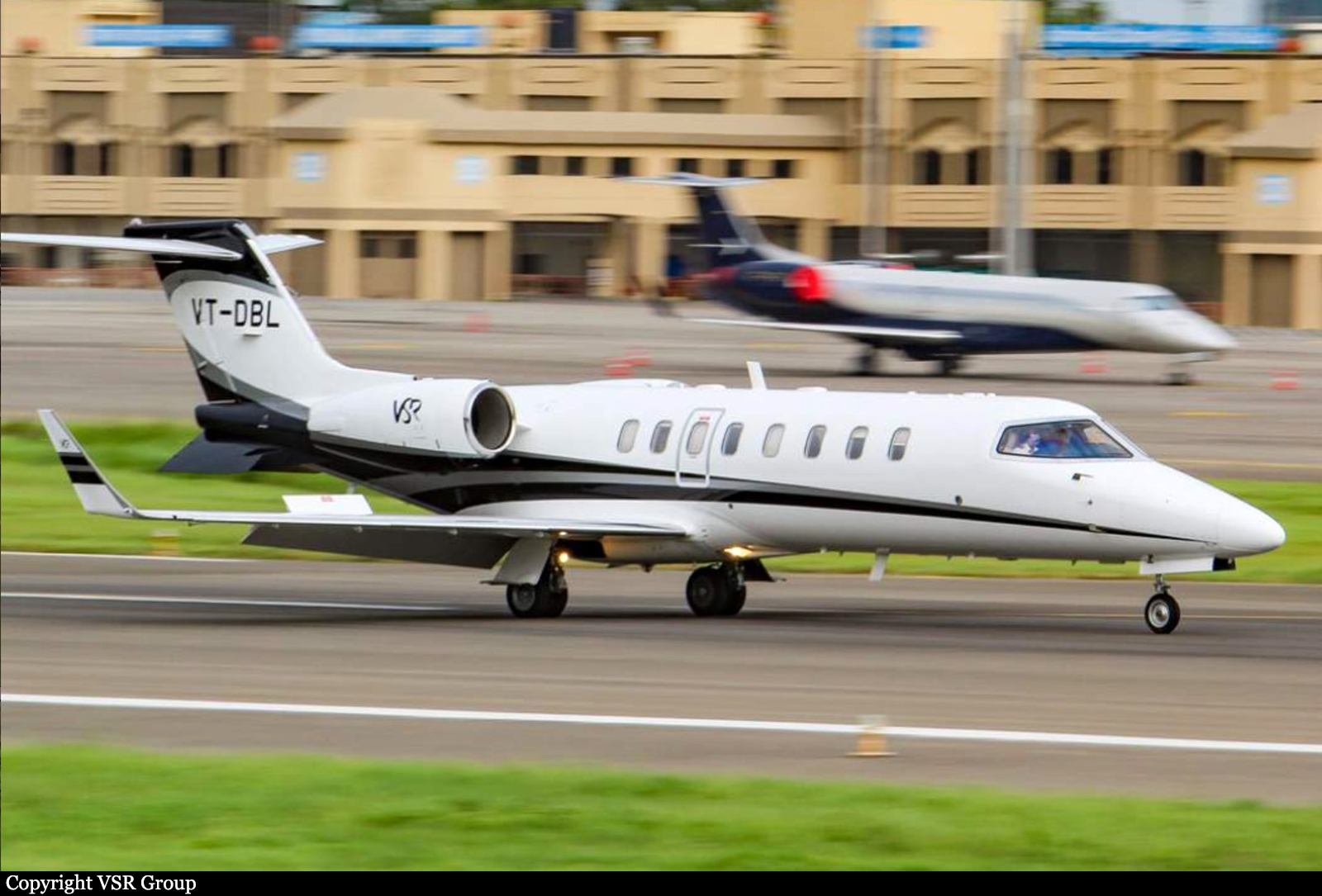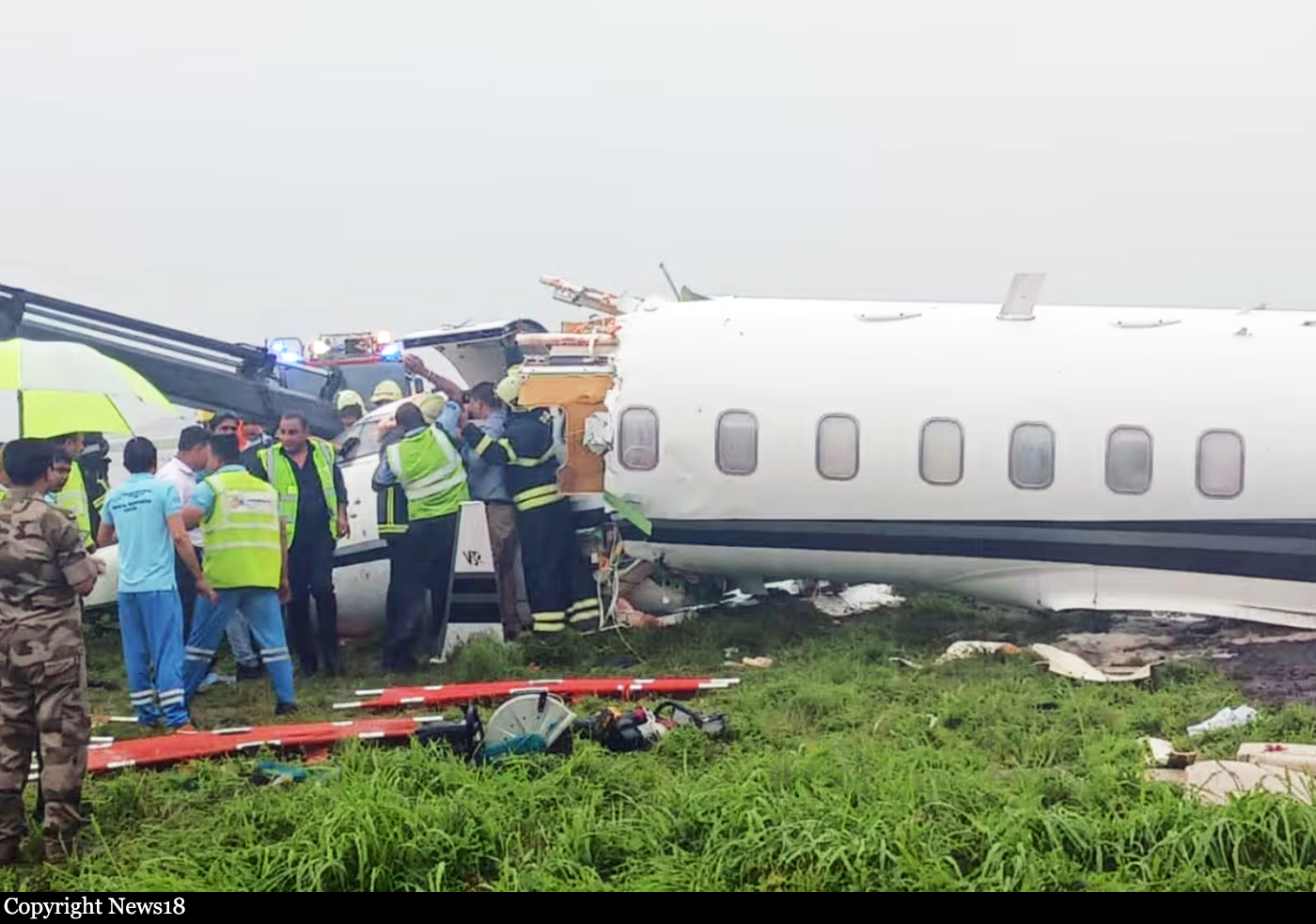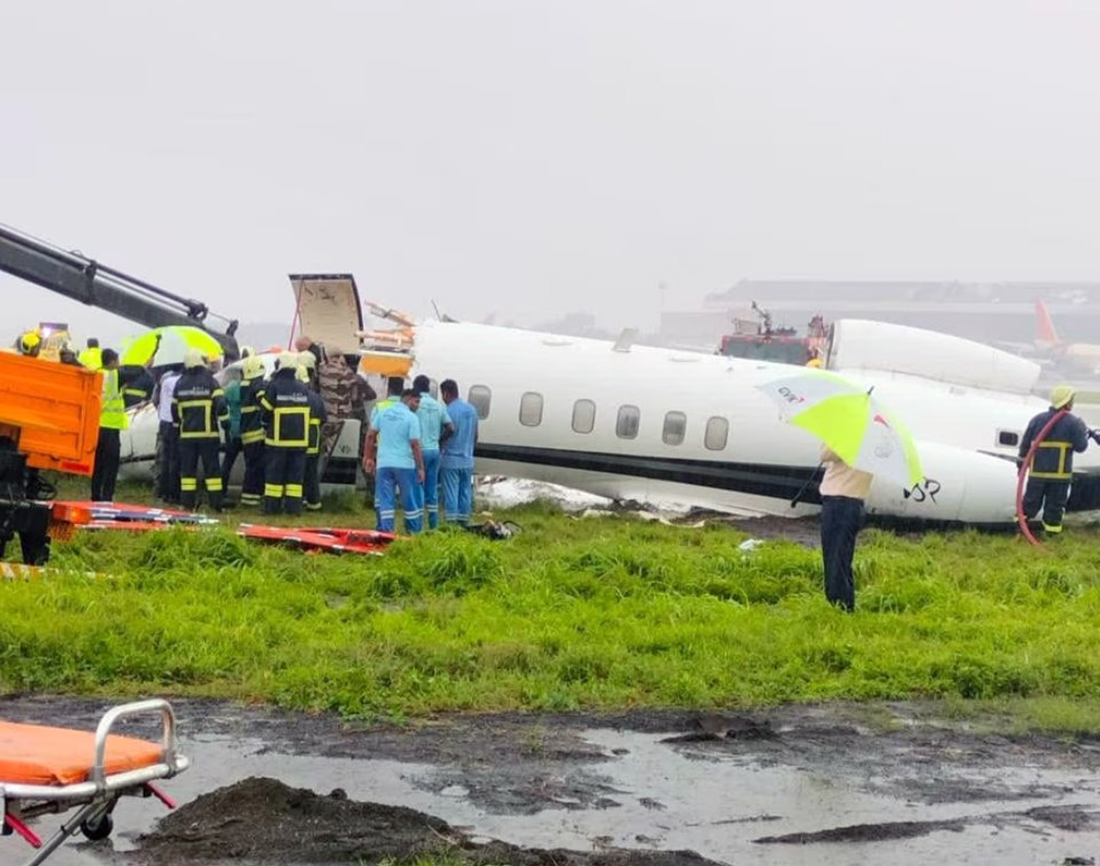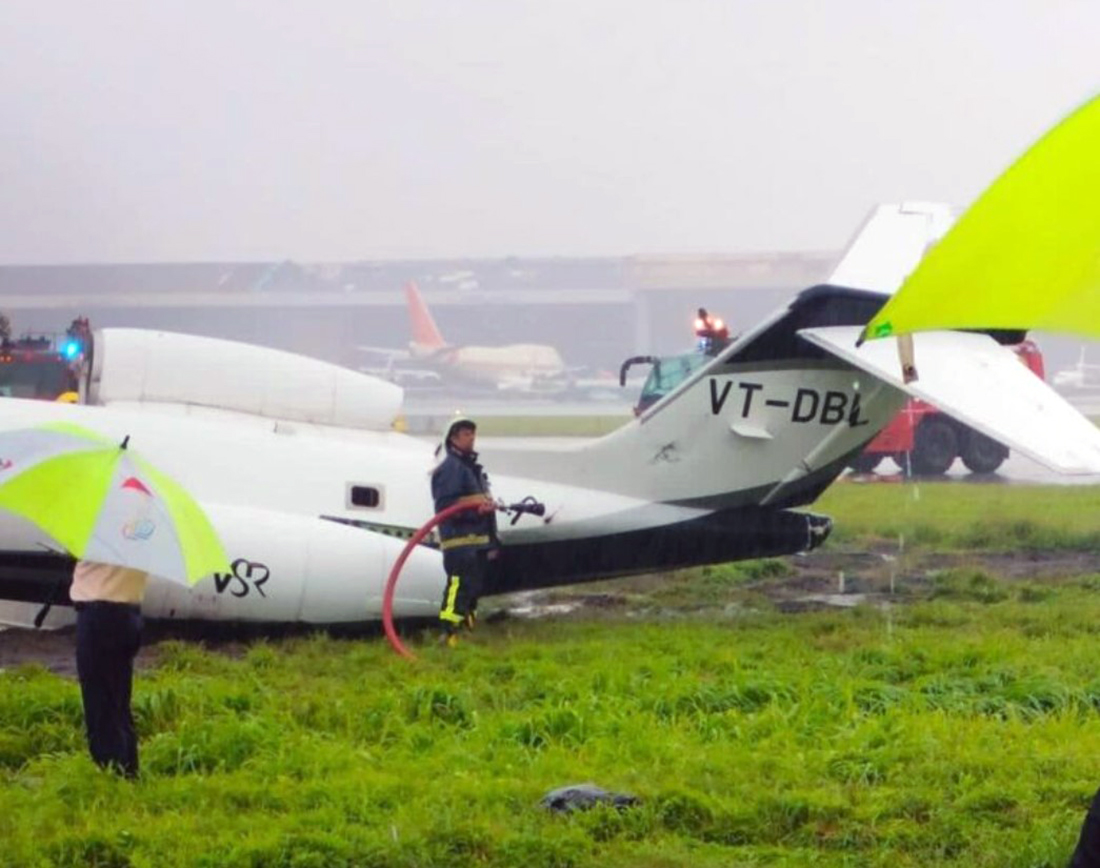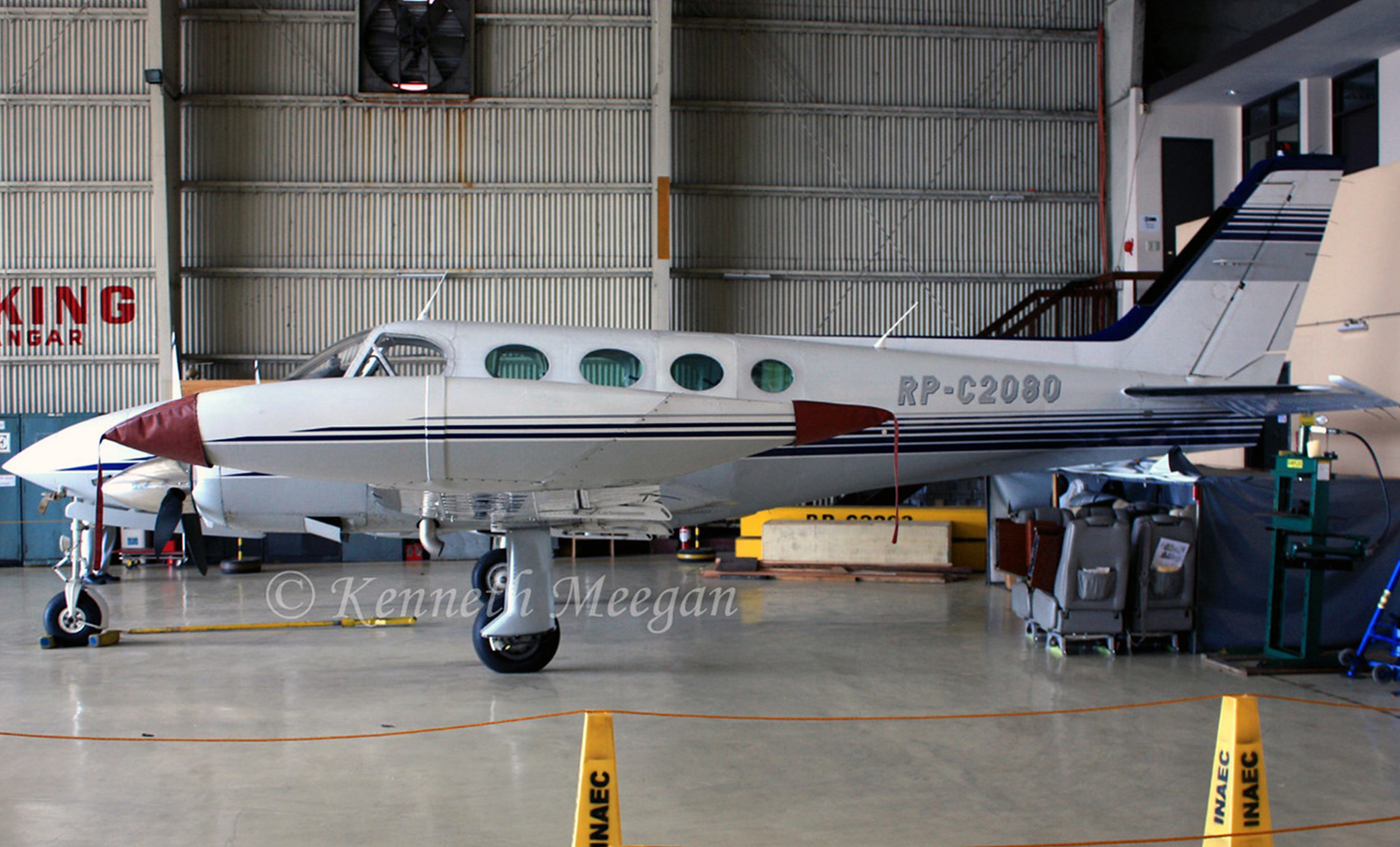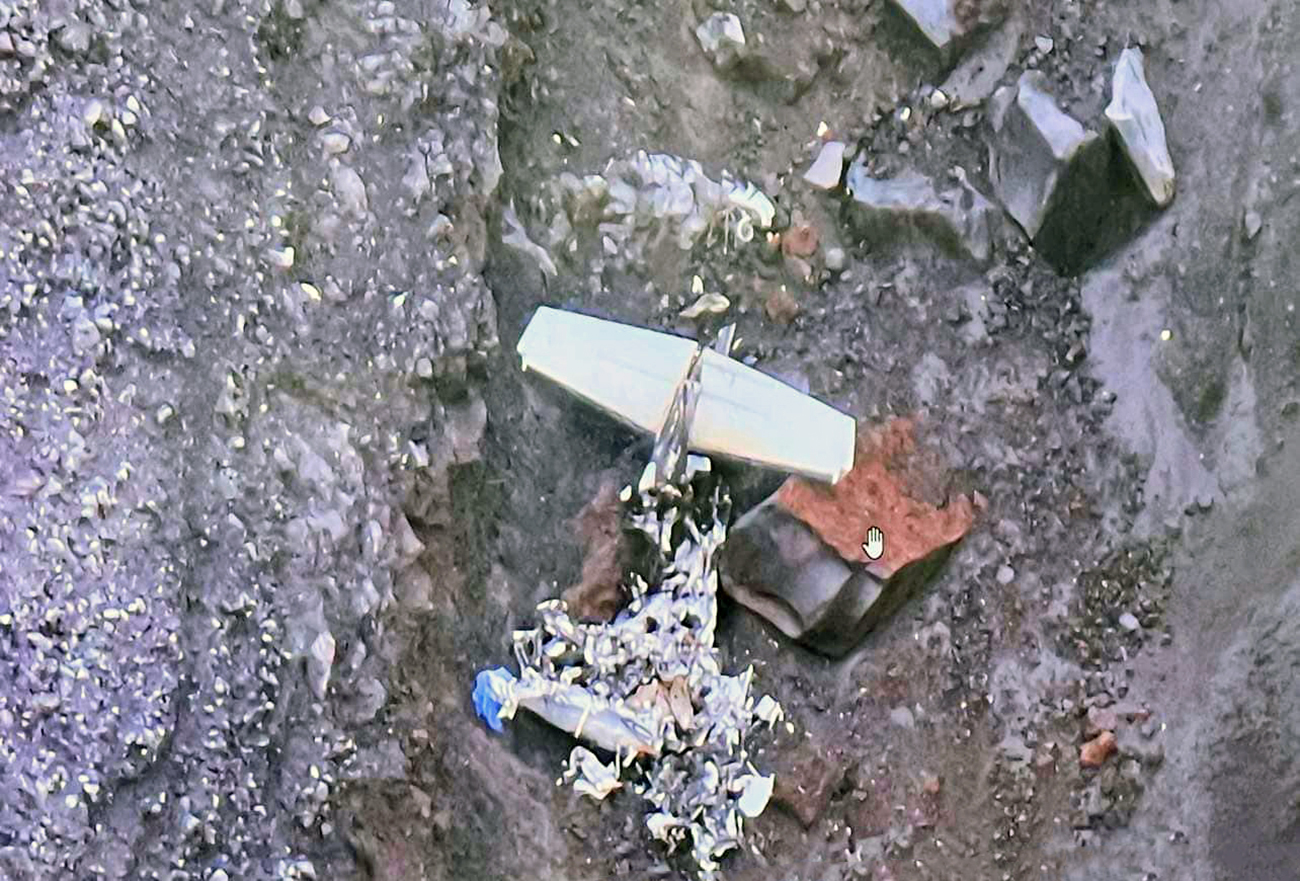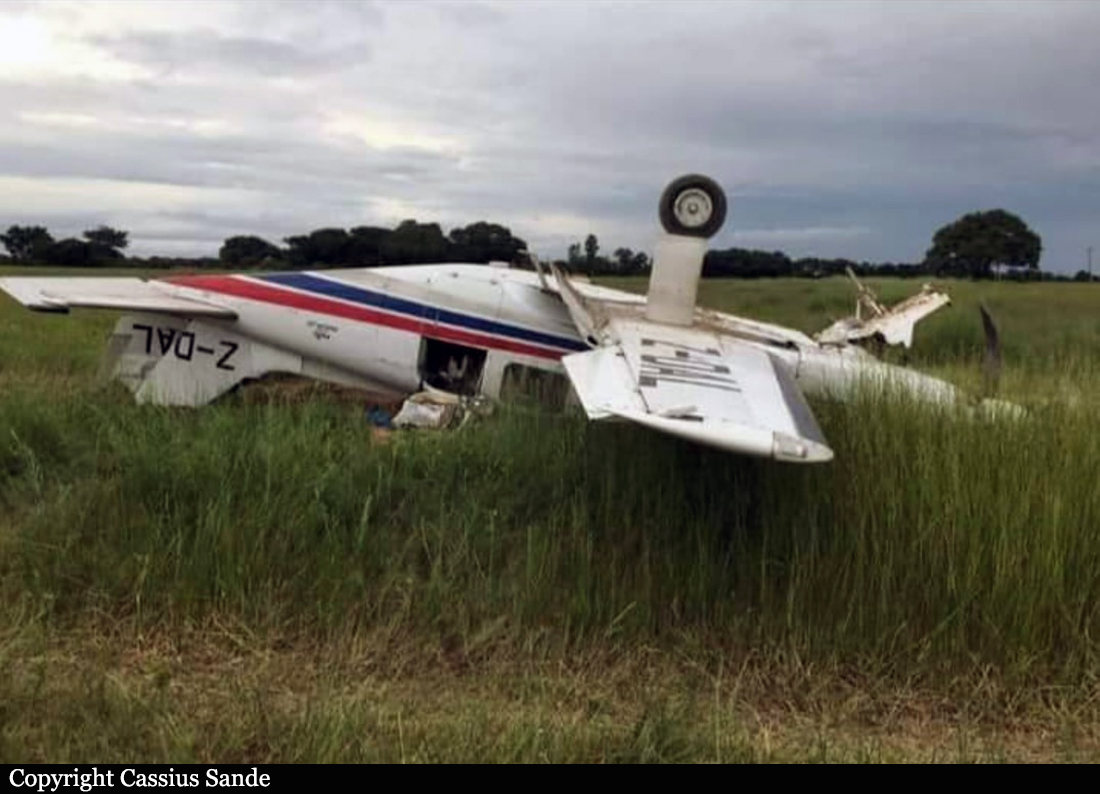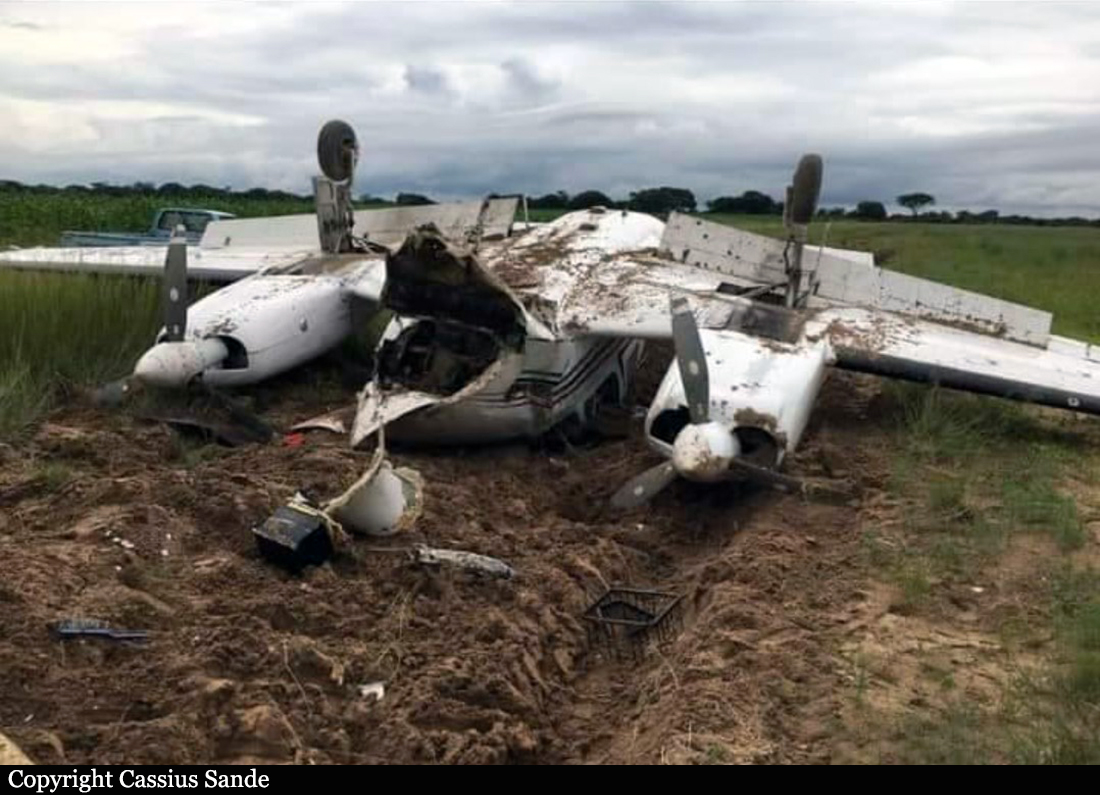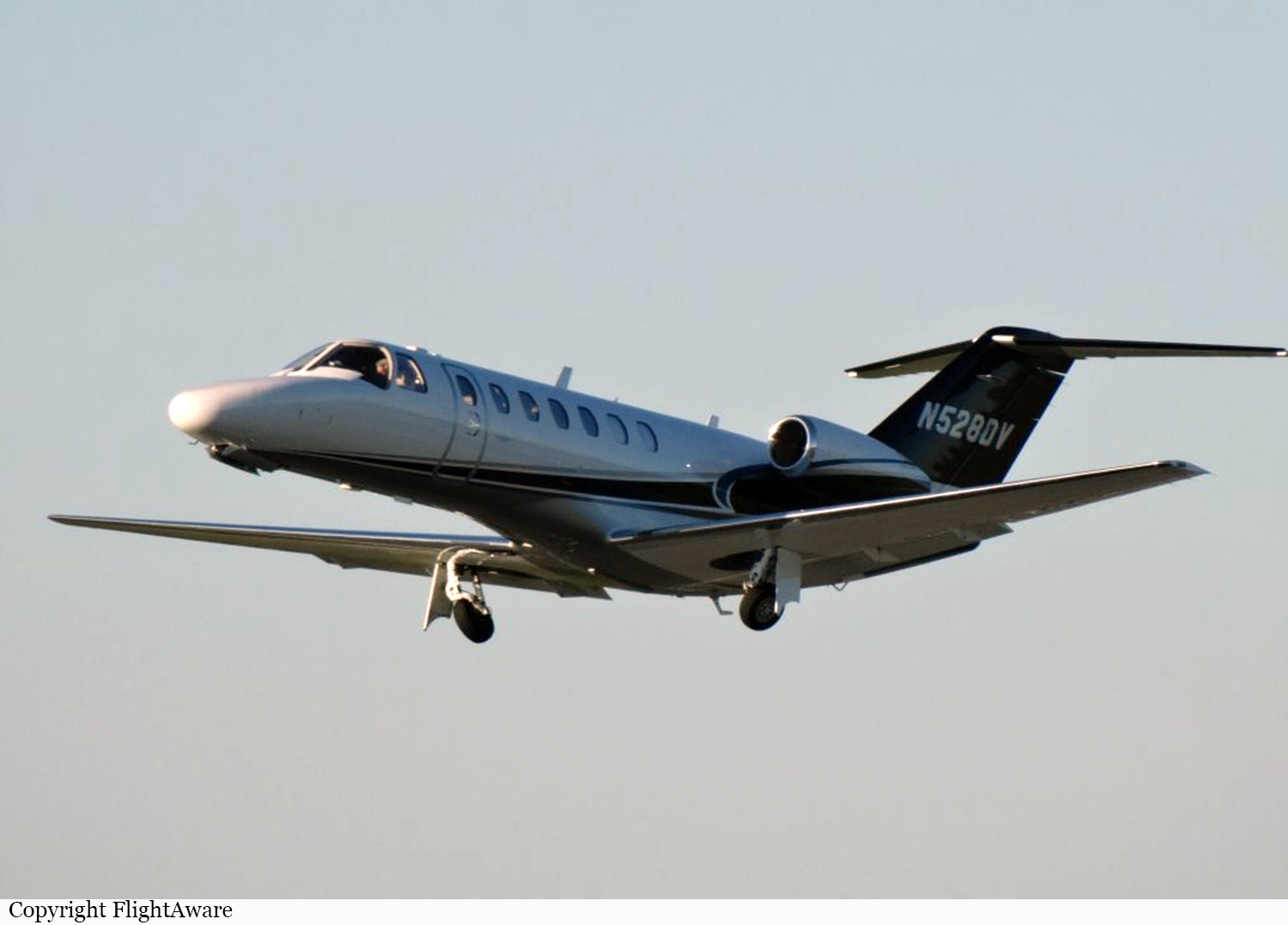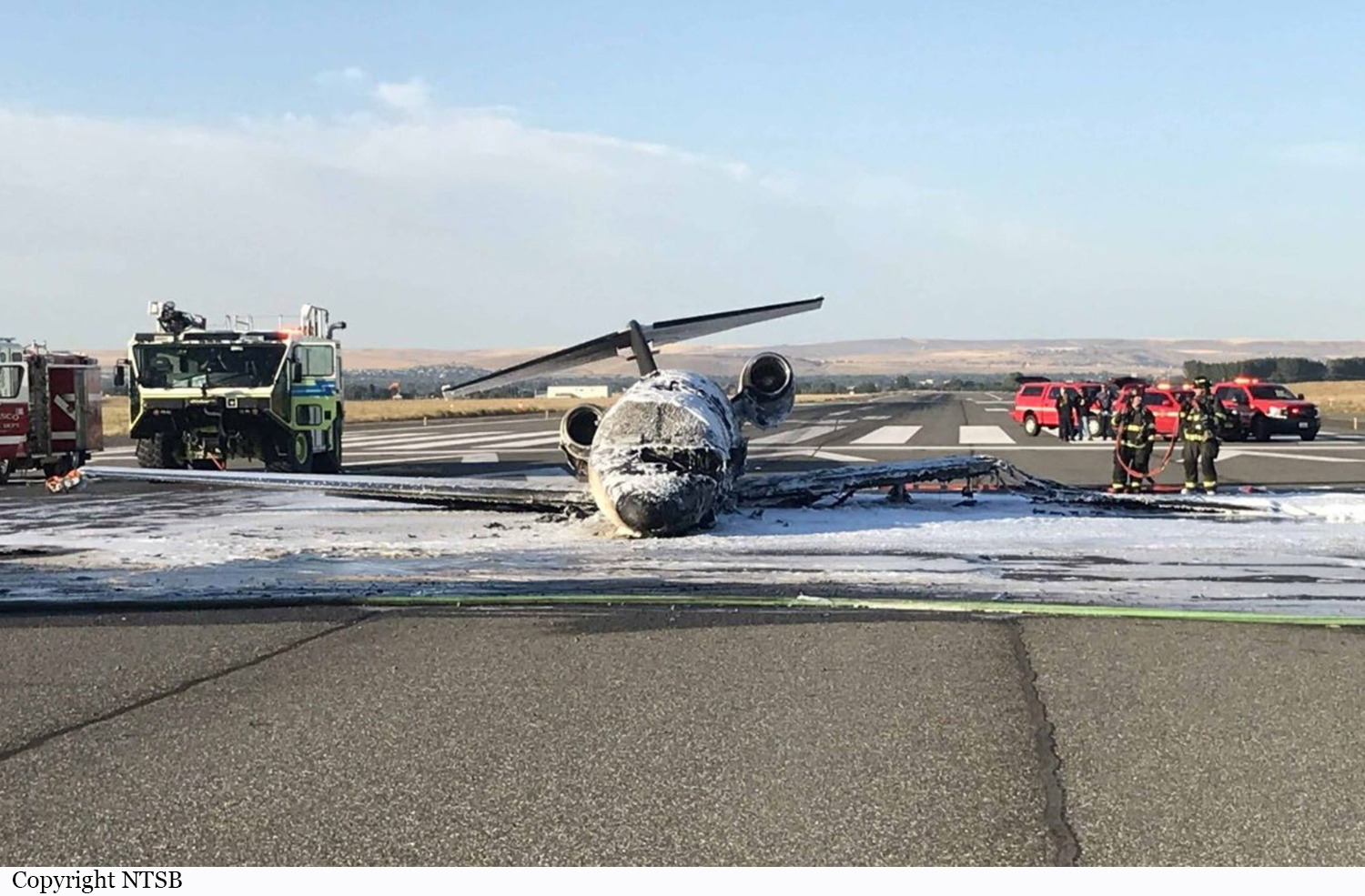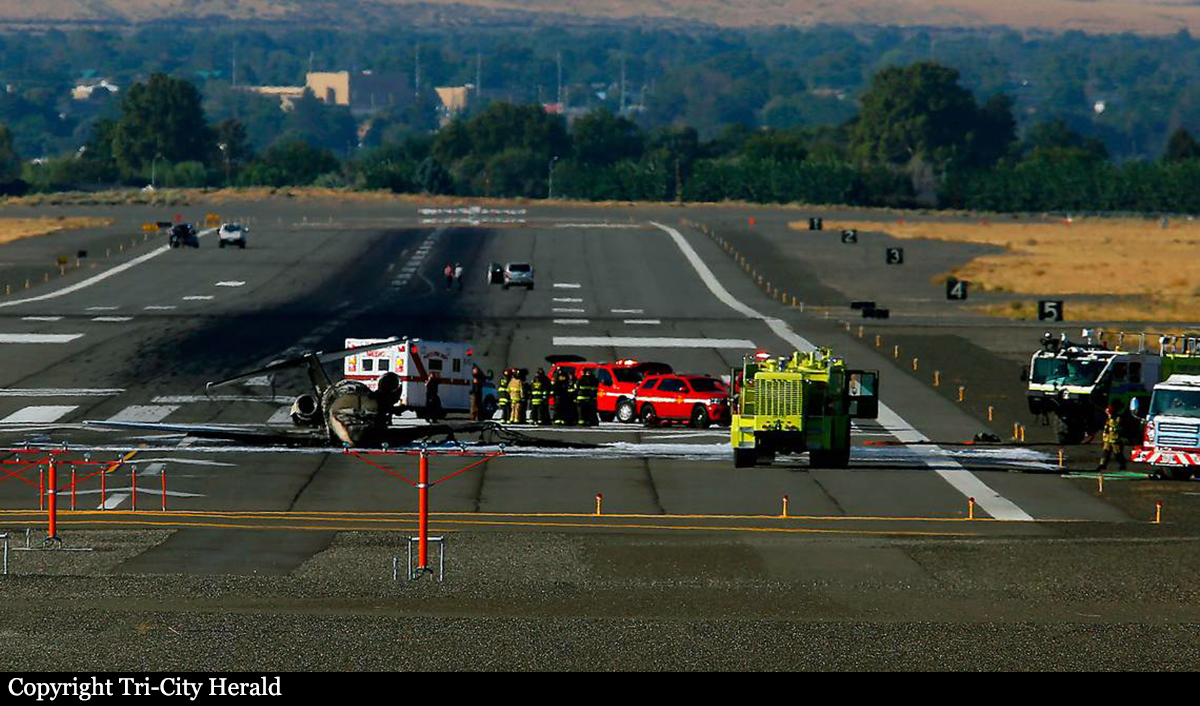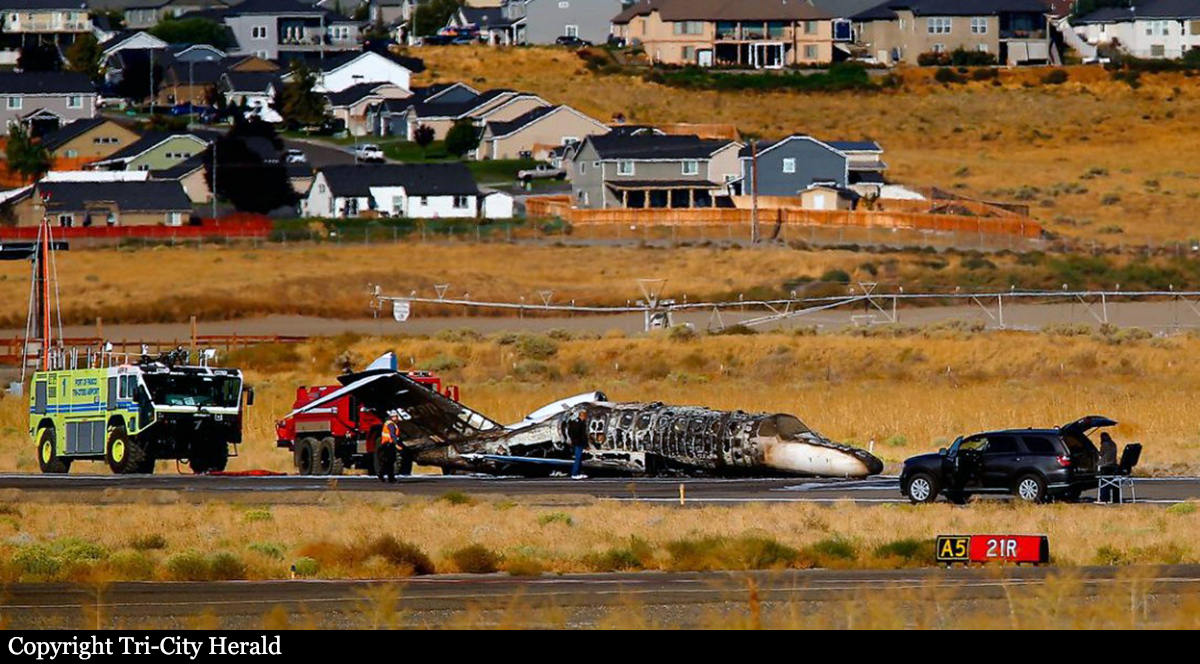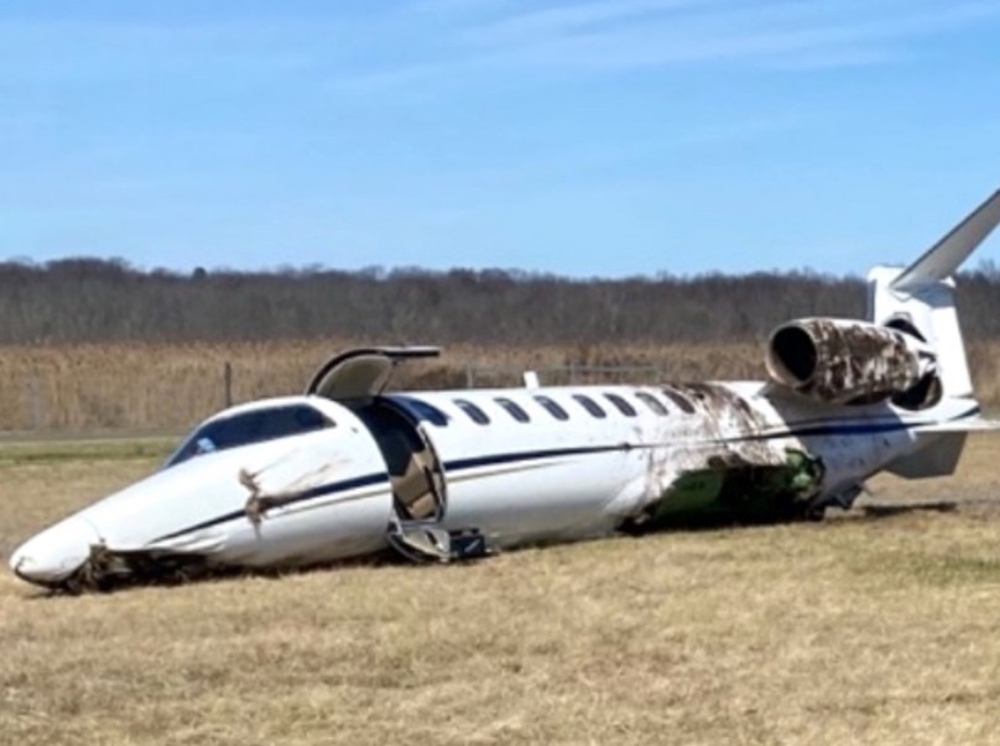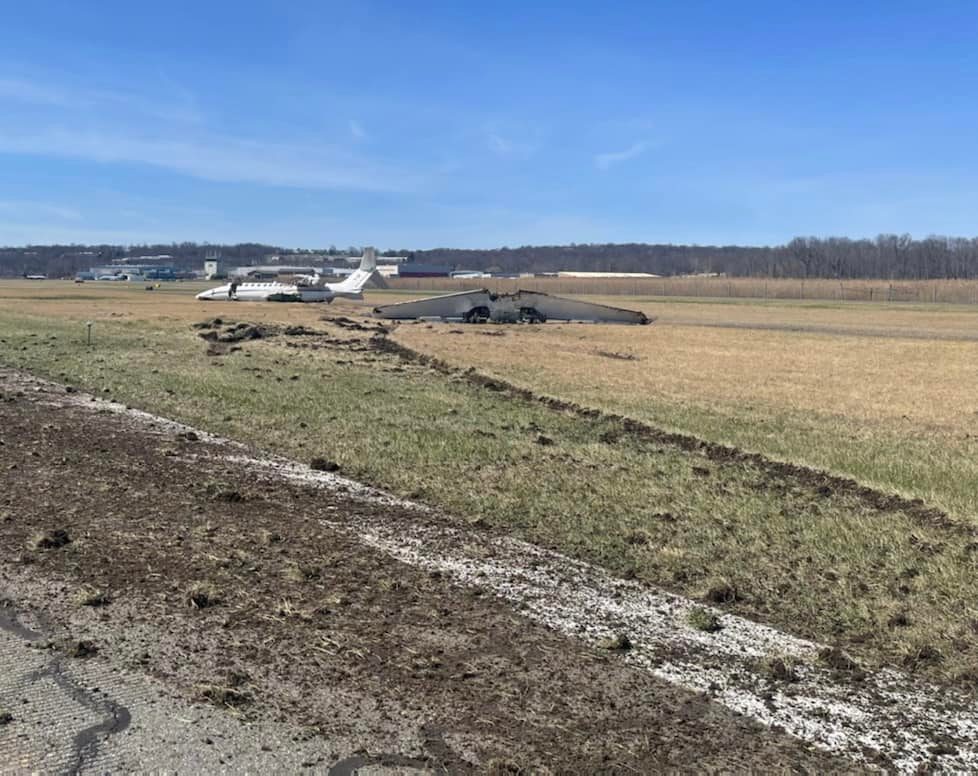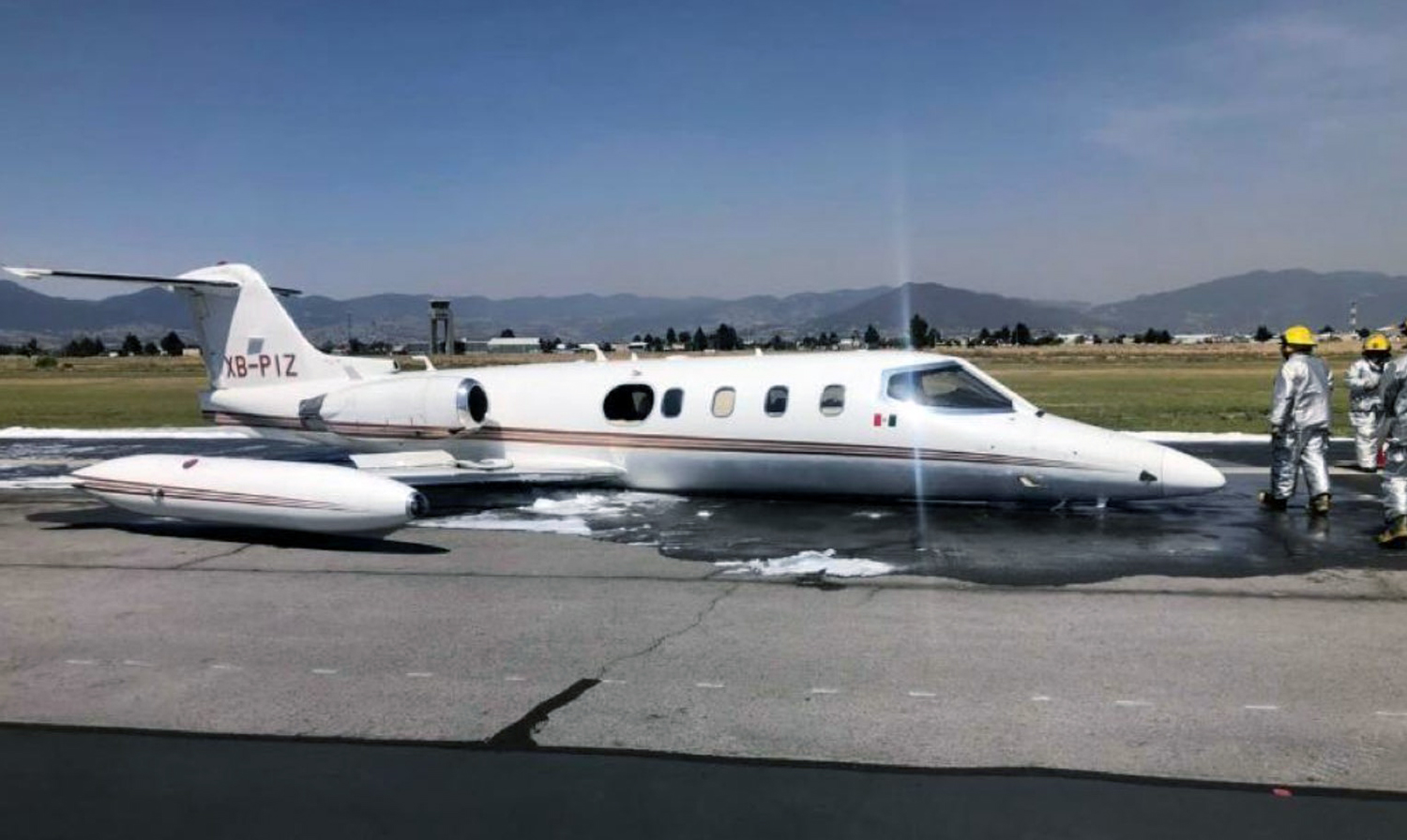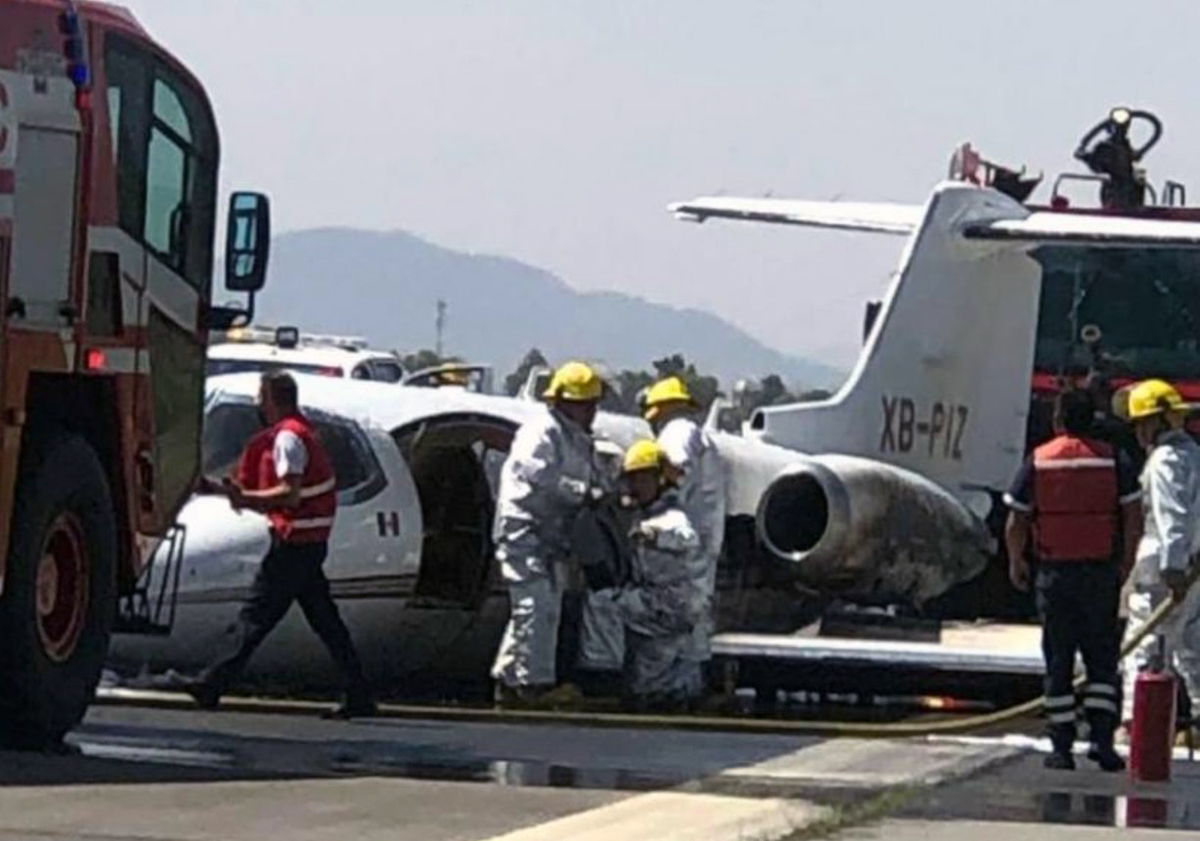Circumstances:
The pilot and four passengers were departing in the multi-engine turbopropeller-powered airplane when the accident occurred. Surveillance video indicated that the takeoff and initial climb appeared normal, however, the airplane than began to lose airspeed and altitude until the airplane entered a left roll and descended toward the ground. Just after the airplane went out of sight, the camera recorded a rising plume of smoke about 1 mile from of the departure end of the runway. Shortly after the plume of smoke appeared, the camera appeared to shake from wind, and recorded blowing debris and heavy rain on the ramp where the camera was located. Just before and during takeoff, the camera showed that the ramp was dry with no rain or noticeable wind. No radio or distress calls were heard from the pilot. Several witnesses saw the airplane’s takeoff and initial climb and they described the airplane as struggling to climb and reported that it entered a steep bank and descent toward the ground shortly after takeoff. The witnesses characterized the weather conditions as stormy and windy, with a weather front passing through the area. The wreckage of the airplane was found amidst heavily wooded terrain adjacent to a factory about 1 mile south of the departure end of runway 18 and a post-impact fire consumed most of the airplane. Detailed examinations of the airframe, engines, flight controls, and propellers did not reveal any pre-impact mechanical anomalies that would have precluded normal operations. Both engines and propellers exhibited evidence of rotation at the time of impact, and several large diameter tree branches at the accident site were found cut consistent with propeller blade strikes, also indicating that the engines were producing power at the time of impact. A performance study indicated that the airplane climbed to a maximum altitude of about 386 ft above ground level before it began to descend. Review of airplane performance from previous takeoffs from the same runway indicated that the airplane’s climb performance during the accident initial climb takeoff was diminished. The reason for the diminished performance could not be determined. Review of weather information indicated that the airplane departed about the time a line of extreme intensity precipitation was approaching, and weather reporting equipment at the airport indicated a wind shift associated with this oncoming line of precipitation. A wind shear alert was active in the control tower advising of 15 to 20 kt gains about 1 mile from the runway. Based on the observation weather data, it is likely that, during the initial climb, the airplane encountered wind with magnitudes between 20 and 30 kts that likely varied in direction about 50°, from a quartering headwind to a crosswind condition. In the minutes following the accident time, this wind continued to shift to a quartering tailwind condition for the departure runway and increased in magnitude to 30 to 40 kts. There was no evidence to suggest that the airplane encountered a microburst or downdraft. Based on available information, the performance study could not conclude why the airplane had diminished performance during the initial climb after takeoff. Although there was diminished performance during the initial climb, it could not be attributed to a airframe, engine, or system anomaly. Although the weather was deteriorating at the time of the accident, and there were wind shifts in the area, a weather study determined that the wind shifts likely contributed to, but did not cause the accident. The pilot’s autopsy was limited by injury but identified severe coronary artery disease. Within the limits of the autopsy, there was no evidence that a medical event contributed to the accident. The pilot’s toxicology testing detected a low level of ethanol in cavity blood only; however, the small amount of ethanol may have been produced postmortem. It is unlikely that the effects of ethanol contributed to the accident.









